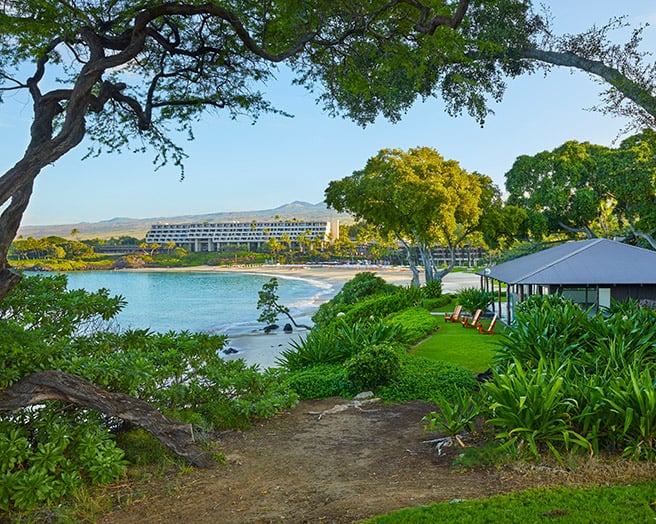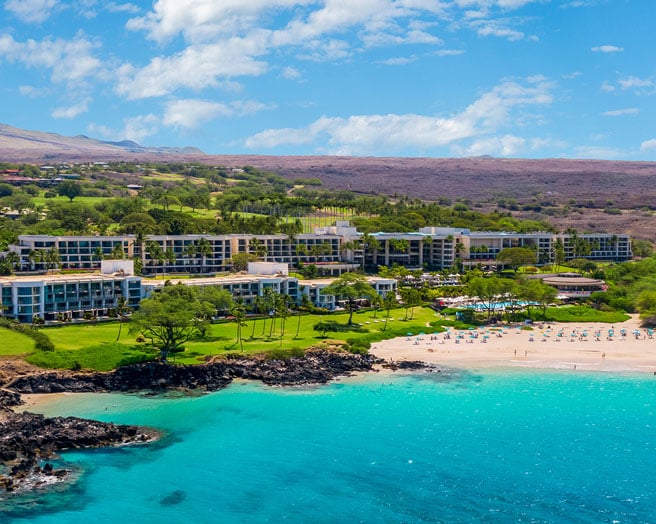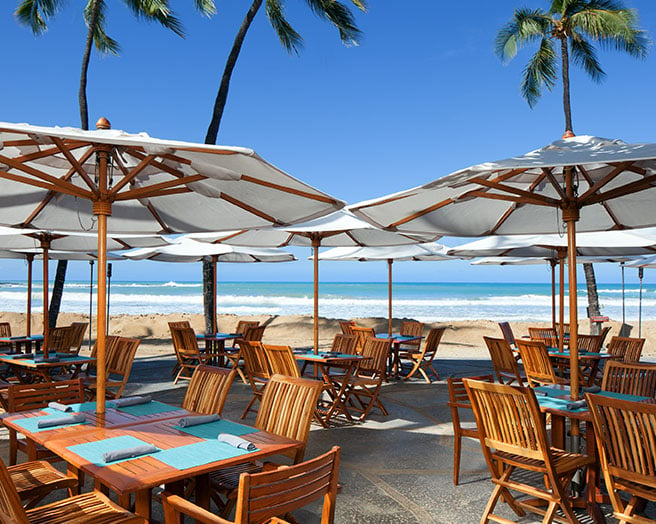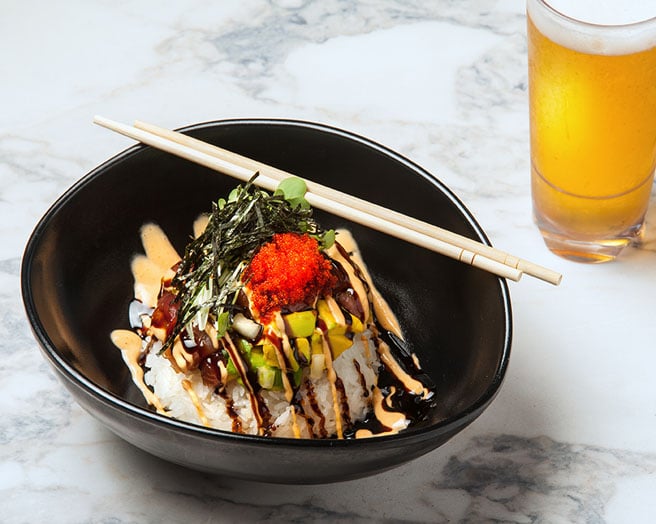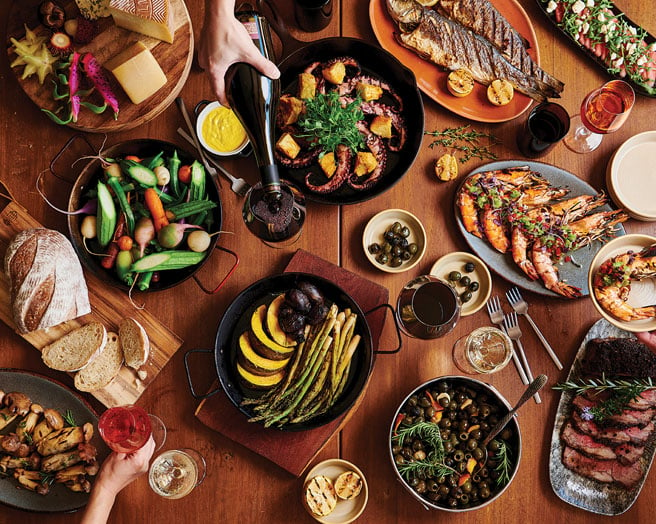Reforesting Sandalwood
Where you see dried up pastureland on the island of Hawai‘i, chances are sandalwood (‘iliahi) used to populate the space forming a verdant green canopy as far as the eye could see while protecting multiple stories of plants and trees that thrived together and nurtured each other. Of the eighteen species of ‘iliahi in the world, Hawai‘i has its own wealth of six species—more than anywhere else—endemic to the islands but now reduced to a rarity by overharvesting. ‘Iliahi was integral to an ancient culture that valued its long-lasting fragrance, its medicinal qualities and its sacred role in accompanying the dead on their next journey.
Sean Chun, a keeper of the traditional culture and kahuna lapa‘au (respected traditional healer) on Kaua‘i, observes the significance of sandalwood to Hawaiians. He remembers as a boy he “used to gather for kupuna (respected elders)” sandalwood “that would include the leaves and shavings with iwi (bones) that were buried.” He continues, “Medicinally, the leaves and bark were boiled with several other herbs and used as a wash for wounds or open sores. It was also used to treat head lice when combined with other herbs.” A use that really harks back to Old Hawai‘i is the heartwood of ‘iliahi being formed into a powder and dusted on kapa (tapa cloth / bark cloth) to add a perfumed scent. Unlike koa, ‘iliahi was used sparingly in the crafting of musical instruments.
Hawaiians were not the only ones to recognize the value of ‘iliahi. The wood has a sacred place among Buddhists, as Buddha was cremated on a bed of sandalwood. Hence, the fragrance was believed to help in the passage from this life to the next soul form. Malas (prayer beads) and incense are made from sandalwood in the belief it is a counterforce to negative forces. As a result, it was a cherished gift in India. Chinese medicinal practitioners especially valued sandalwood for activating Qi energy, bringing it into harmony by stimulating yang energy.
Sandalwood was a staple in Chinese traditional and Ayurvedic medicine. The oil or paste from sandalwood has been used for millenia to calm and cool the body, as well as to treat ailments such as the common cold, skin concerns and upset stomach. Healing properties of sandalwood are promising for the ailments present today throughout the world—from mood disorders, especially anxiety, to inflammation and even cancer. Herbalists are enthralled with many of the properties of sandalwood. Lisa Parker on Kaua‘i was fortunate enough to have acquired a gallon bag of sandalwood sawdust. She was able to use it in her “distiller to make some nice hydrosols.” Mainly, she enjoyed co-distilling sandalwood with ylang ylang, the latter also known for boosting mood and encouraging a feeling of well-being. Spa experiences with sandalwood and other healing herbs are very desirable, also owing to beneficial skin effects.
Demand was so high for ‘iliahi in the early 1800s that it became the main Hawaiian export between 1810 and 1820. Chinese traders contracted with Hawaii’s first king, Kamehameha I. The trade decimated the forests and took a toll on the laborers who carried the wood, since Hawai‘i did not have the animals used elsewhere to be “beasts of burdens.” The extensive deforestation that took place affects Hawai‘i to this day, leaving huge land areas literally dried up and barren. The entire tree was harvested in the past to maximize the capability to extract oil from the root and tree stump. Overharvesting took place contravening the Hawaiian tradition of maintaining a balance between the land and people—planting a tree for the one extracted and taking from the land sparingly and respectfully. To further the plight of ‘iliahi forests, the tree requires a “symbiotic planting” in which host trees (namely ‘ōhi‘a lehua, māmane, pūkiawe and ‘a’ali’i) are companion planted to support the tree.
In a new era of cultural awakening and native environmental awareness, efforts are being made throughout the island to restore what has been lost. Hāloa ‘Aina is a spread of land on the slopes of Mauna Loa on the Island of Hawai‘i that consists of 2,780 acres dedicated to reforesting ‘iliahi. The name includes the Hawaiian word ‘aina which is very symbolic and suggestive of the Hawaiian traditional wisdom, mālama ‘aina, that is to take care of the land because it takes care of us. The care and honoring of the land are core values of indigenous cultures. Founder Wade Lee found the land in a barren state in 2010 and committed to restoring it. The stewards of the burgeoning forest started keeping track of the number of ‘iliahi trees in 2014. According to a land survey in 2021, they documented the existence of 700,000 new trees, including the ones they had planted and natural volunteers. Reforestation efforts have also seen rainfall increase.
Only the dead trees are harvested. When the main stem at the top of the tree dies, the tree becomes susceptible to fungi, with some entering through the root system from the soil. This is the tree ripe for harvesting. The oil is then extracted over twenty-eight to thirty hours. Son of the founder, Justin Lee, described the unadulterated process. The oil is cured in a warm environment for seventy-two hours and does not need to be touched again before going to market.
Combining economic viability with sustainability, Hāloa ‘Aina aims to be a model for others intent on reforesting pastures into forests. Justin describes what he hopes will be the end product. The goal is to take the land back to “pre-cow conditions,” 150 years before cattle, before the cattle industry clear-cut the forest and introduced non-native grass. A huge challenge in restoring the forest is clearing invasive plants that multiply quickly in a tropical environment. Justin wants Hāloa ‘Aina “to resemble what old Hawai‘i sandalwood groves would look like.” The project considers the dry land forest to be the most endangered environment in Hawai‘i. His main concern is “that we are a Hawai‘i family doing what is right for Hawai‘i.”
The Hawai‘i we know as paradise is very much defined by the forest. Even with loss, forests make up about one-third of the land area of the state. The Hawaiian tropical forest stands out among forests for its numerous endemic species, estimated to be over 10,000. Sadly, the forest area of Hawai‘i has been reduced by half. Therefore, the loss of species is devastating. Species include plants, animals and microscopic organisms. So many species have been endangered and lost that Hawai‘i has increasingly been labeled “the extinction capital of the world.” Alarmingly, the forest is struggling to be a sanctuary for the species that depend on it. Habitat loss is certainly a factor in the devastating loss of forest birds.
The forest is essential to the quality and supply of water. Forest depletion first became a concern in the 19th century when it became apparent that water might not be available to sustain sugar production as it became more profitable. In response, a forest reserve system was created but has not been able to keep up with the pace of destruction. Concerns about the availability of drinking water currently have become heightened. Rainfall tends to decline as the forests decline. In a multi-storied tropical forest, each layer plays its role in collecting rainfall and condensation. Leaves, trunks and root systems become conduits for water. The canopy is a giant soaking sheet. Higher level plants drip, drip, drip water onto lower layer species. Surface layers of ferns, shrubs and fungi cushion the forest floor. Abundant vegetation and the cooperative ecosystem can soften the fall of rain and absorb it gradually into the ground and filter it into streams. The opposite situation of run-off, even flooding, result in soil erosion occurring on bare, parched land. “Rewilding” through reforestation creates a gentler environment for natural processes and safer habitat for forest creatures.
The spiritual motivation behind saving the forests was beautifully expressed by Chan K’in Viejo, a revered indigenous Mayan spiritial leader. He wrote, “When a mighty tree is felled, a star falls from the sky. When the great trees are cut down, the rain ends, and forest turns to weed and grass.” Such has been the tragic fate of ‘iliahi forests. Much is at stake in the reforestation projects that are taking place throughout the islands … ancient Hawaiian culture, traditional medicinal practices, the creatures that inhabit the forest, the shape and fertility of the land, how the rain falls, and, it seems, the stars.
Learn more about Hāloa ‘Aina and opportunities for planting trees at their reforestation project and other volunteer activities at haloaaina.com.
